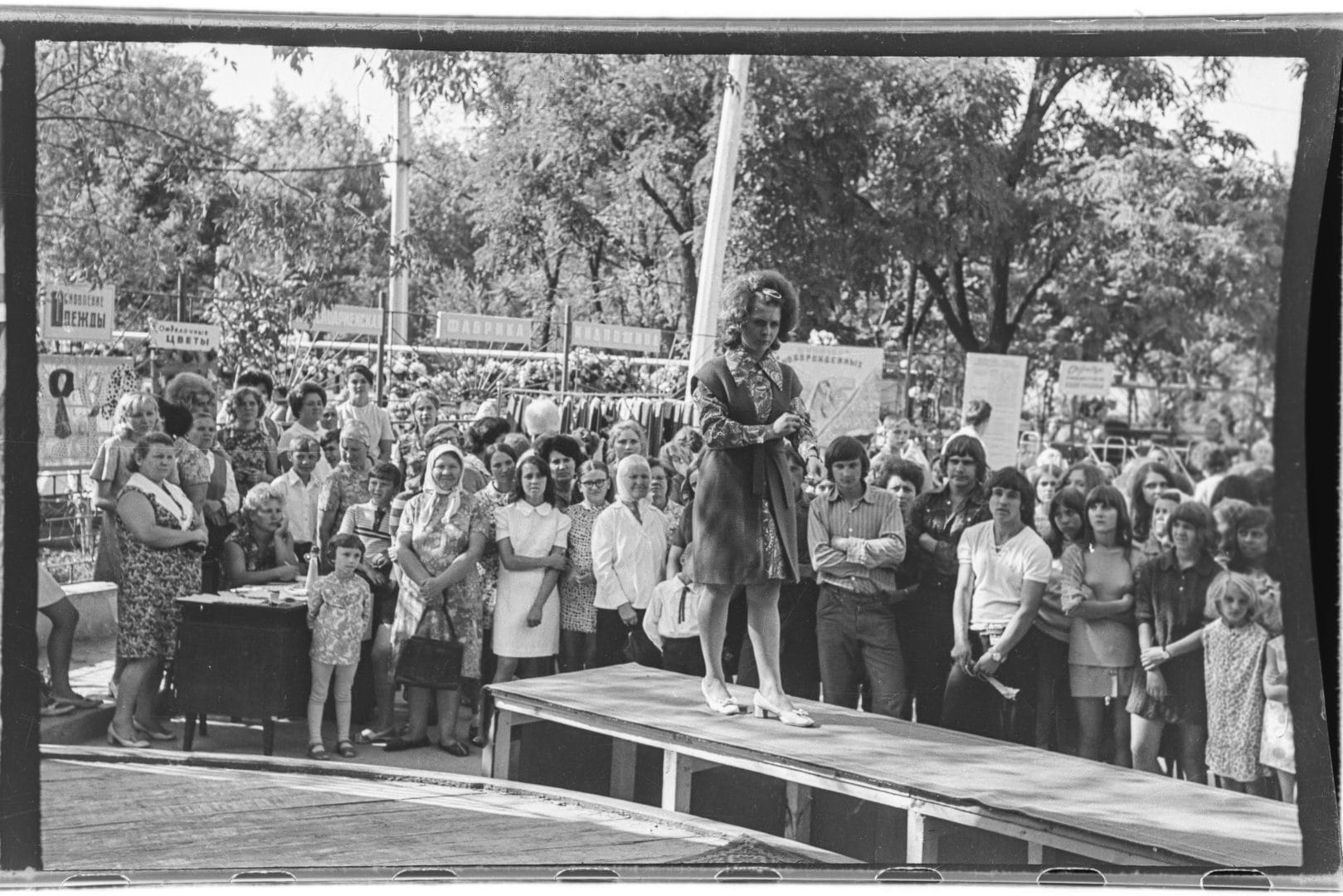By the time this photograph was taken, the products manufactured by the ‘Rainbow’ factory were in great demand across Ukraine and even beyond. The factory’s goods were sold in Donetsk, Dnipropetrovsk, Vinnytsia, Kyiv, Lviv, Kherson, and Cherkasy, and outside of Ukraine, in shops in Moscow and in the Baltic States. In line with the labour norms of the time, the factory regularly overfulfilled its quotas for monthly and annual production. To encourage such overproduction, a social club ‘Little Lady’ (‘Gospodorochka’) functioned on the territory of the factory running competitions and awarding prizes to the most productive seamstresses and sewing-machine operators. Factory workers operated modern machinery, including universal sewing machines manufactured in the Podilsk Metallurgy Factory in Kamianets-Podilskyi and the Japanese Juki sewing machine. The high quality of the production, a limited part of which was automated, was recognised by official accolades.
This image was taken in the factory’s heyday when production quality and worker’s wages were high. Soon after, however, following the collapse of socialism, the company began to decline. As the Soviet Union disintegrated, transnational ties were broken, and sales markets began to be lost. The factory entered a period of protracted economic decline. Workers stopped receiving their salaries and were sent on vacation without pay. In the late 1990s, the factory began to fulfil orders from the Krasnoarmeisk (Pokrovsk) mines, “Zapadnaya No. 1″, “Krasnolimanskaya”, named after Stakhanov, and Dimitrov City Hospital, as well as manufacturing children’s clothing for foreign export. Bilokon’s image ‘Fashion Show’, with its references to late-socialist consumerism, material abundance, and small-town glamour thus capture a moment that was transient, but still in living memory for many today. The quality of the factory’s produce, examples of which still exist today, remains a focus of local pride.


This image, taken by Mayak photojournalist Mykola Bilokon, shows a woman on a catwalk demonstrating some of the clothing manufactured by ‘Rainbow’ sewing factory in Krasnoarmeisk (today’s Pokrovsk), in the Donetsk region. The woman is dressed in a floral print, dagger-collared, button-down dress and woollen, belted, armless cardigan and wears a contemporary backcombed hairstyle and makeup. An audience made up of different generations of Pokrovsk residents watches the show. Their clothing and hairstyles also demonstrate the changing fashions of the 1970s and 1980s. While some women in their 40s and 50s (born in Stalinist 1930s and 1940s) wear knee-length, possibly homemade, patterned floral dresses and headscarves, some younger members of the audience wear more contemporary fashions: mini-skirts, jeans, and men’s T-shirts with lace-up necklines. A judge appears to sit behind a table to the left. Behind the crowd, storefronts are visible with demonstrations of product samples that have been manufactured in the factory.